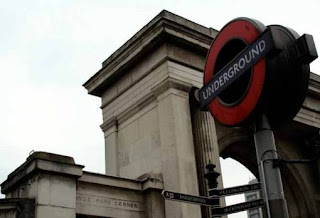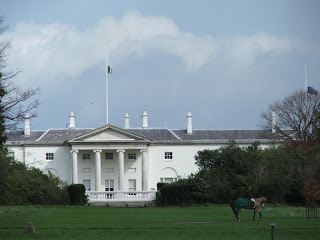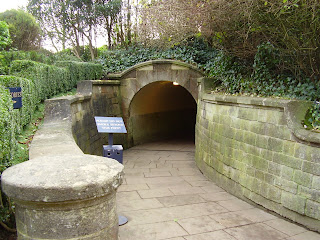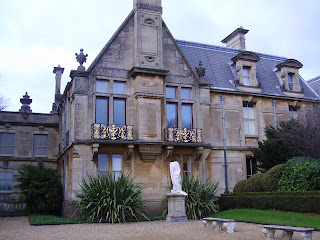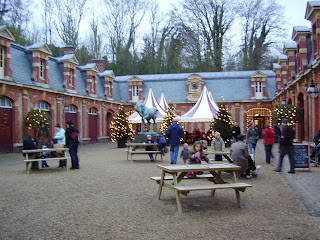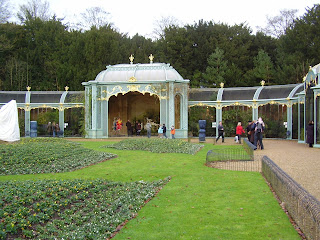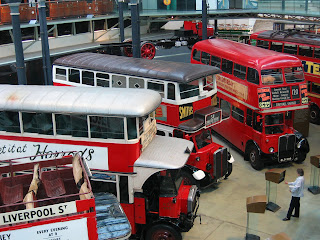
Tesco Truck parked on a corner, on a double yellow and blocking pedestrian ramp at corner of Glentworth and Dorset Street
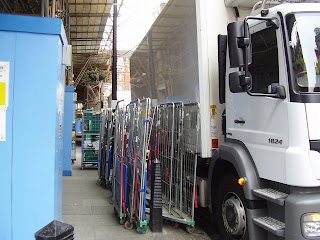
Tesco stealing the public pavement
Westminster council has been accused of letting central London become "Tescoland" after giving the go-ahead for its 21st branch in the borough. Tesco is the major British supermarket chain which has now got over 32% market share in the United Kingdom. The bald figures on market share hide much detail as Tesco, which saw profits reach £2.25bn in the past year, has increasingly branched out into non-food goods, such as electrical goods, music and clothes and it has moved decisively into new areas including Financial Services, home delivery, internet and catalogue sales and Neighbourhood and Petrol Station stores.
It is notorious for its persistence on planning issues often battering Local authorities in the UK with multiple applications backed by top notch planning consultants and lawyers. On existing stores it has built it often enlarges car parks and selling space and moves to 24 hour opening to greatly increase the traffic, footfall and turnover from the original application approved by the local authorities. John Waite, who investigated the supermarket for Radio 4's Face the Facts, said Tesco "stand accused of dragging out the planning process, challenging enforcement orders, manipulating the planning laws, bending them, if you like, and breaking them on occasion."
One store opened for business in 2004, only for planning officers to discover it was 20% over the planned size. And a pile of waste from the building of a Buckinghamshire store remains in an Area of Outstanding Natural Beauty. Tesco accepted it made a mistake in the first case and worked with the council to find a solution and was trying to quickly resolve the second case. The store which was over the planned size opened in 2004 is in Portwood, near Stockport in Greater Manchester. It is still open for business and is said to be turning over £1m a week. The company is currently filing a new planning application.
Last year during the building of a new Tesco superstore in Gerrards Cross in Buckinghamshire, building works collapsed on to a main railway commuter line. At the time Network Rail said Tesco and its contractors removed more than 25,000 tonnes of earth and some 60 metres of tunnel structure. However, 27,000 tonnes of waste from that collapse remains, and it is situated in an Area of Outstanding Natural Beauty. It has been there a year, despite an order from the council, because of a continuing challenge from Tesco's contractor.
There are serious issues relating to competition in the UK relating both to its huge unused land bank where it is happy to let expensive sites lie fallow to block competition and the scale of purchases which allows it to squeeze suppliers.
In the town of Slough Tesco been accused of reducing competition and choice by the Competition Commission (CC) through its acquisition of a former Co-op owned site in, which the supermarket giant was ordered to stop developing in October 2007. In a detailed report listing its provisional findings, the Competition Commission says the purchase of the site in 2003, in close proximity to an existing 100,000 sq ft Tesco store, "has resulted in a substantial lessening of competition in the market for grocery retailing in Slough". Tesco bought the Co-op store four years ago as a temporary space to trade from until a redevelopment of an existing site had been completed. After making the transition, Tesco was ordered to sell the site by the Office of Fair Trading (OFT) but has failed to do so meaning it has no competitor in the area.
There are persistent complaints from organisations such as the National Farmer’s Union of Tesco abusing its market dominance and suppliers afraid to go public out of fear of losing business. The Office of Fair Trading (OFT) has set out findings indicating that Tesco, J Sainsbury, Wm Morrison, Safeway (now part of Wm Morrison) and Asda conspired with the dairy processors Arla, Dairy Crest, Lactalis McLelland, the Cheese Company and Wiseman to fix the prices of milk, butter and cheese. The OFT's provisional findings are that the companies engaged in price-fixing over a two-year period, in 2002 and 2003, and that the practice was harmful to consumers by restricting the competitive process, leading to higher prices.
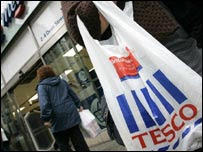
The Tesco brand first appeared in 1924. The name came about after its founder Jack Cohen bought a shipment of tea from T.E. Stockwell. He made new labels using the first three letters of the supplier's name (TES), and the first two letters of his surname (CO), forming the word "TESCO". In 1973 he handed over the reins to his son-in-law Leslie Porter whose wife, Tesco heiress Dame Shirley Porter was Tory leader of Westminster Council in Central London in the Eighties. She was found guilty of political corruption in the "homes-for-votes" scandal and after a High Court battle she was forced to pay the council £12.3 million, a negotiated settlement less than a quarter of the amount which the Law Lords ruled as due. Westminster Council is still in Tory control and run by Sir Simon Milton, a protege of Dame Shirley Porter.
A plan for a Tesco in Lisson Grove near Marylebone station was cleared by the Conservative council this month (November 2007). There are already 20 Tescos in the borough, including 10 in and around Marylebone. The new store was opposed by the Marylebone Society and many shopkeepers, as well as 1,200 locals who signed a petition. Resident and Liberal Democrat activist Martin Thompson, who helped organise opposition to the store, said: "I am deeply disappointed. So many residents and shopkeepers have serious concerns. Why don't we just rebrand Westminster 'Tescoland' and have done with it?
"Not only has the council ignored so many local people, it has gone against its own officials. Its highways department warns the revised proposals for servicing the shop will cause traffic chaos and be a danger to children from the local primary school.
"This is a stupid decision that will be disastrous for the local economy." The site is only a few hundred yards from Marylebone High Street, praised as one of London's most diverse shopping streets in London - and already home to a Tesco.
However, Robert Davis, Cabinet member for planning on Westminster council, said: "This new store will make the shopping centre in Lisson Grove more attractive to residents and business and will help regenerate the area. We carefully considered all the feedback in relation to the scheme, and while we do recognise there was opposition to the application, the council did receive a number of letters in support. There was no strong evidence to support the claim that the proposed store would affect trade in the existing centre to warrant refusing planning permission."
He said Tesco had agreed to provide £100,000 towards improving local shop fronts, would fund roadwork’s in Hayes Place and CCTV cameras in Lisson Grove and would "work with local organisations to provide employment and training opportunities".
However two examples of these Tesco “Local” stores in Westminster don’t give much hope that they are good neighbours, indeed they seem to be engaging in anti social behaviour. At the corner of Dorset and Glentworth Street in Marylebone a Tesco “Local” opened when they bought over Cullen’s, a chain of neighbourhood stores. Along this footpath between 8 and 9 each morning 4,500 people walk the short distance from Marylebone to Baker Street. At the Tesco store a large delivery truck is always parked on a double yellow line directly on the corner, blocking off the ramp for disabled access at the corner and making it “blind” to turning traffic and adding to the danger by forcing pedestrians onto the roadway. To park in this space by the goods door for the shop these large trucks have to line up across the main road, blocking the traffic and reverse into the space across the pedestrian crossing. This they do without any “pointsman” to ensure the safety of pedestrians and turning traffic. Frequently there are other similarly sized trucks parked on double yellow lines waiting for there turn in the non “Loading Bay” causing further detriment to the area. In addition
In London’s lively Covent Garden there is a Tesco Metro on the corner of Garrick Street and New Row, a pedestrianised precinct. The goods door is at the side of the building on New Row. There is a similar story here with delivery trucks turning into Henrietta Street opposite and then reversing across the road (again without a points man for safety) and into the pedestrian precinct which is normally crowded with shoppers and tourists in this busy area. Once again the pavement is crowded with Tesco trolleys. In both cases we should remember we are not talking about them using Tesco property – We are talking about a Public Road and a Public Footpath. We are talking about clear hazards under the Road Traffic Act, reversing across public roads, not using a point’s man, parking on a corner, Parking in restricted areas, restricting the vision of other traffic and creating a hazard for pedestrians.
And then there is the lack of consideration for others, delivering during peak hours, using large trucks, delivering on 10 / 15 trucks per day because these are on multi-drops from different suppliers and only a few pallets come off each truck. The Tesco staff are “only doing their job”, the drivers are agency drivers from outsourced logistics companies and you’ve guessed it, they are “only doing their job”, and the vulture like parking wardens in Westminster who are anxious to fill their quota with tickets elsewhere come to an arrangement with the Tesco stores. Failing that the drivers leave their first ticket of the day on the windscreen so wardens think they have already been ticketed. Clearly “Green” Tesco could lesson the impact by delivering off peak, using smaller vehicles and doing single drop deliveries but clearly they feel no need to do this and equally clearly they are under no pressure from Westminster Council or the Metropolitan Police to change their ways. No danger then of Westminster Council looking for an ASBO in respect of Tesco’s expropriation of public property to private use.
Contrast this with the situation when I (increasingly rarely) use the car park of my local Tesco branch which has been put on steroids and is now a Tesco Extra open 24 hours a day. A big yellow sign on the way in informs me that by using their car park I agree my car registration can be photographed, machine read and recorded and if I stay longer than 3 hours that they can issue me with that strangest of creatures, a “Civil Penalty Notice” for 70 pounds and I consent to them applying to the DVLA for my details if they need to do this. Consider the arrogance of this proposition, personal data I have provided to the Government out of a legal obligation will be provided to a mega Supermarket chain to charge me a penalty for staying too long in their car park. And I consent to this and much more by using “their” property.
Tesco is a remarkable success story, first under Leslie Porter and Ian McLaurin and now under Terry Leahy, a scouser of Irish extraction. Its business achievements have been remarkable and from its modest headquarters in Cheshunt, Hertfordshire, it has built a hugely competent and agile retail organisation which has been successful across all retail spectrums and in an increasing number of countries. However such success breeds hubris and arrogance and it is clear that Tesco is in many ways stifling competition and diversity in British retailing, down the whole length of the supply chain. It is clear that it has sucked business from traditional high streets and retailers and destroyed diversity as we head towards Clone Town Britain.
Nowhere is its hubris, arrogance and distortion more apparent than in Westminster, the borough run by the daughter of its founder for many years and now run by her interns. Its “neighbourhood” stores destroy neighbourhoods and the diversity and retail vitality which gives these neighbourhoods their vitality and attractiveness. It is a bad neighbour which cares not that its delivery patterns maximise disruption to the neighbourhoods it serves nor that it expropriates public roads and paths to its private use as it chases growth, profit and dominance. Tesco is maxed; nowhere more so than in its favourite borough of Westminster covering prime Central London from the houses of Parliament to Regent’s Park. Britain needs to restore the retail balance by rolling back Tesco. So let the roll back begin in the borough it ate first, let the roll back begin in Westminster.

